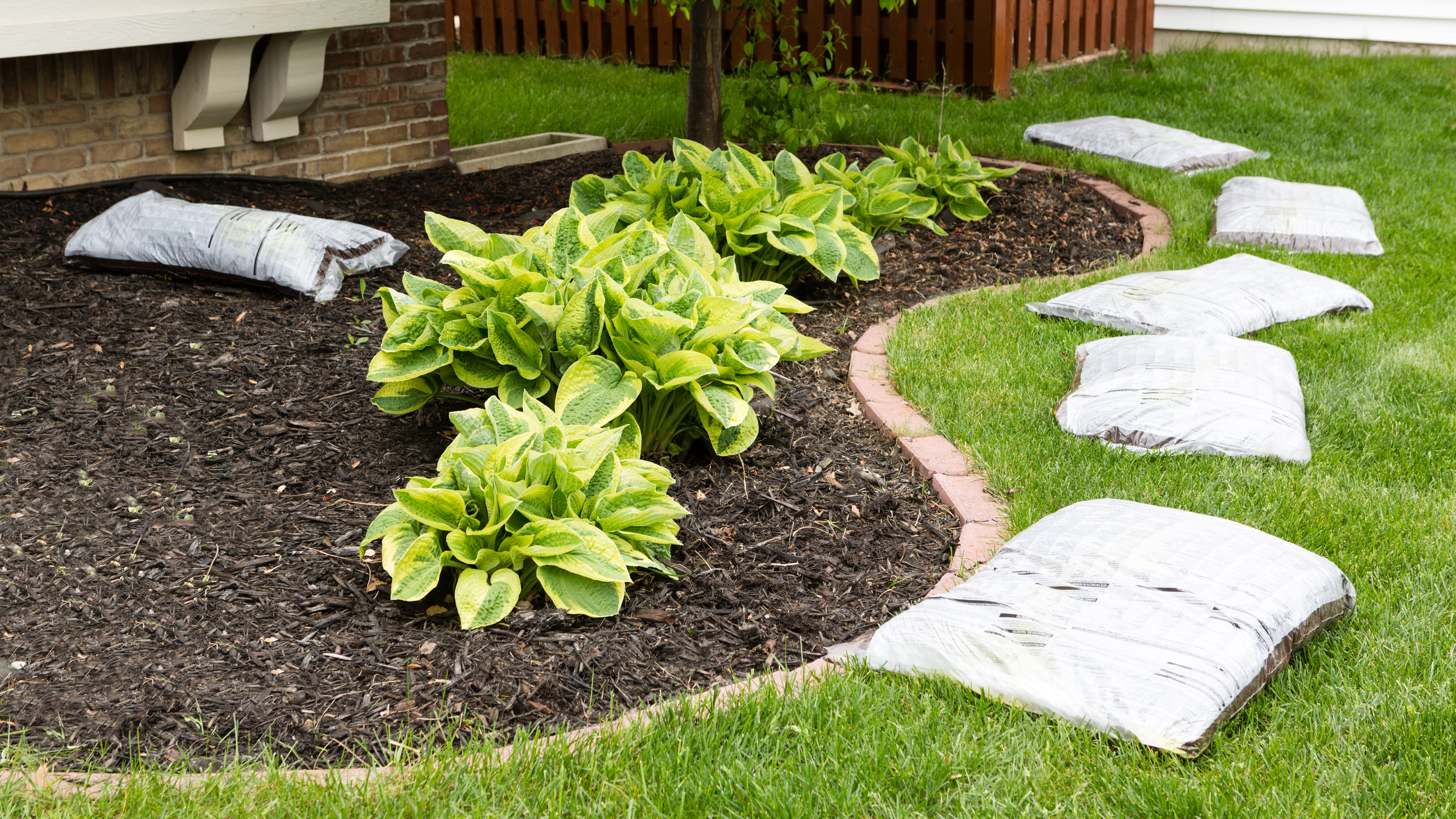How To Calculate Garden Soil And Mulch Coverage
"How much mulch do I need?" It's a perennial question for gardeners. We've broken down how to calculate how much mulch, compost, or soil you need for your garden.


How much area does one bag of mulch cover? What about soil and compost? If you've ever come up short when working on a gardening project, you know the frustration of having to stop work to procure more supplies. Luckily, there are ways to calculate mulch, soil and compost coverage.
How Many Bags of Mulch Do I Need?
Mulch is most often sold packaged in bags or loose by the yard. A cubic yard equals 27 cubic feet (.8 cubic meter), while most bags of mulch hold 2 cubic feet (.06 cubic meter). It takes 13.5 bags to equal a cubic yard. To figure out how much mulch to buy or order, you will first need to decide how thick a layer you wish to spread.
Experts recommend a 2 to 4 inch (5-10 cm.) layer of mulch. Less than this amount allows weeds to poke through. Too thick a layer can prevent water from reaching the soil. When replenishing an existing layer, only calculate the depth of the mulch you will be adding to maintain that 2 to 4 inch (5-10 cm.) depth.
The next step is calculating the square footage of the flowerbed. To do this, multiply the length by the width of the flowerbed. To find the square footage of a circular bed, multiply pi (3.14) times the radius squared (half the distance across the circle times itself). Then, plug your numbers into this formula to determine how many cubic yards of mulch you will need:
- Area in square footage x depth of mulch in inches x .0031 = cubic yards. To determine how many 2 cubic foot bags of mulch you will need, multiply by 13.5.
Example: A 10 foot (.3 m.) by 10 foot flowerbed equals 100 square feet (2.8 cubic meter). To spread a 3 inch (7.6 cm.) layer of mulch, multiply 100 times 3 times .0031. This equals .93 cubic yards or 12.5 bags.
How Many Bags of Soil Do I Need?
Let's say you want to calculate soil for raised bed gardens, planters or individual pots. When purchasing bagged materials for smaller areas, you will find it easier to work in cubic feet rather than yards. Use this formula:
- Area of the raised bed (Length in feet x width in feet x height in inches) divided by the number of cubic feet in each bag.
Example: A raised bed measuring 4 feet (1.2 m.) long by 2 feet (.6 m.) wide by 6 inches (15 cm.) deep has an area of 48 cubic feet (1.7 cubic meter). For bagged soil or compost containing .31 cubic feet of material, you would need 154 bags (48/.31=154).
Sign up for the Gardening Know How newsletter today and receive a free copy of our e-book "How to Grow Delicious Tomatoes".
You're likely to find many bagged products labeled in dry quarts, not cubic feet. (1 cubic foot equals 25.7 dry quarts) To determine how many dry quarts of potting mix you need, multiply the area of the flowerbed times 25.7 to find the number of quarts needed. Then divide this figure by the number of quarts in each bag.
Example: For the same 48 cubic foot raised bed as above, calculate 48 x 25.7 = 1,233.6 dry quarts. For bags containing 8 dry quarts, you would need slightly more than 154 bags (1233.6/8=154.2).
How Many Gallons in a Bag of Potting Soil?
If a five gallon bucket holds 20 quarts (19 L.), does this mean it would take 2.5 (8 quart) bags of potting soil? Not quite, five gallon buckets are measured in liquid quarts while potting soil is sold by the dry quart. In the US, 1 liquid quart equals .86 dry quarts.
To fill a 20 liquid quart container to the brim, you would need 17.2 dry quarts. (20 x .86) or 2.2 (8 quart) bags of potting soil. While this all seems a bit confusing, the good news is some potting soil manufacturers list conversion tables on their packages. Thus, gardeners can simply enjoy their hobby sans the math.

Laura Miller has been gardening all her life. Holding a degree in Biology, Nutrition, and Agriculture, Laura's area of expertise is vegetables, herbs, and all things edible. She lives in Ohio.